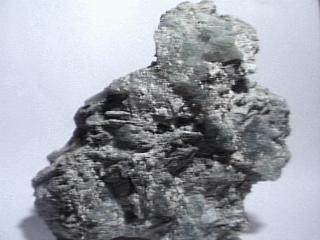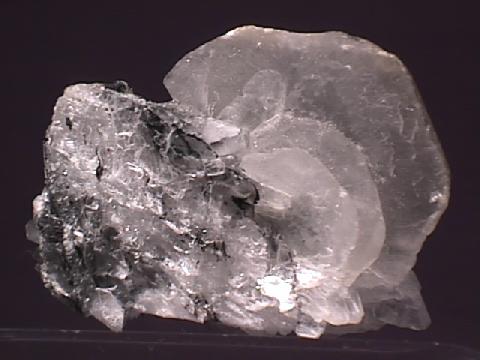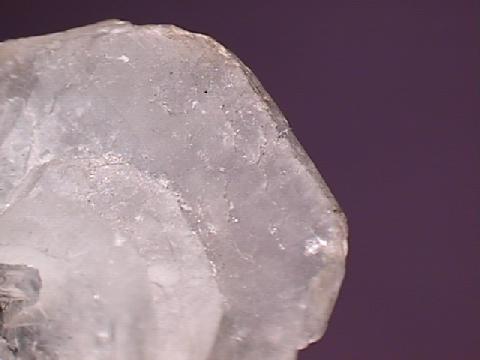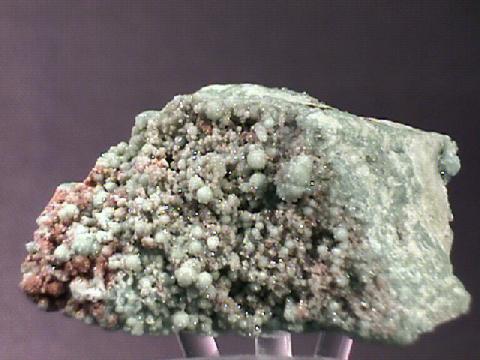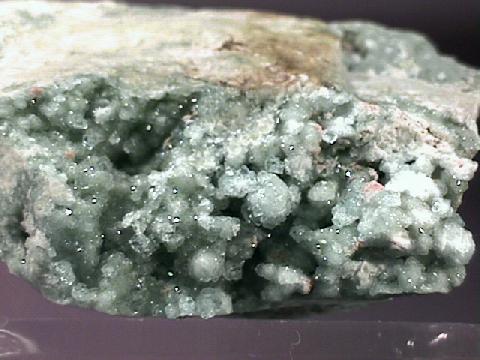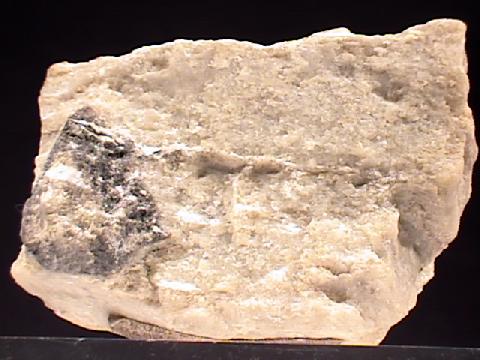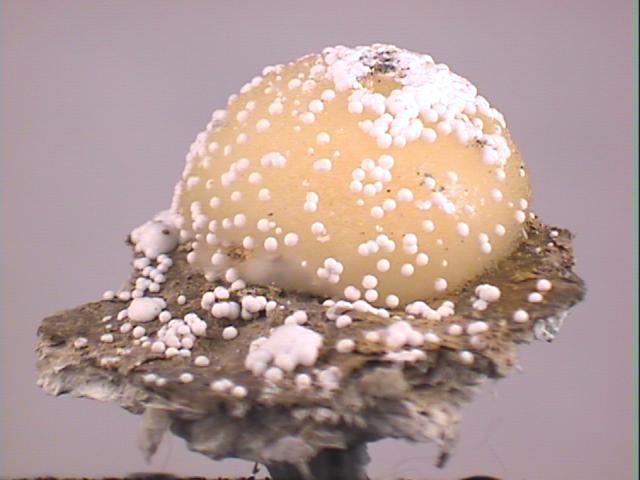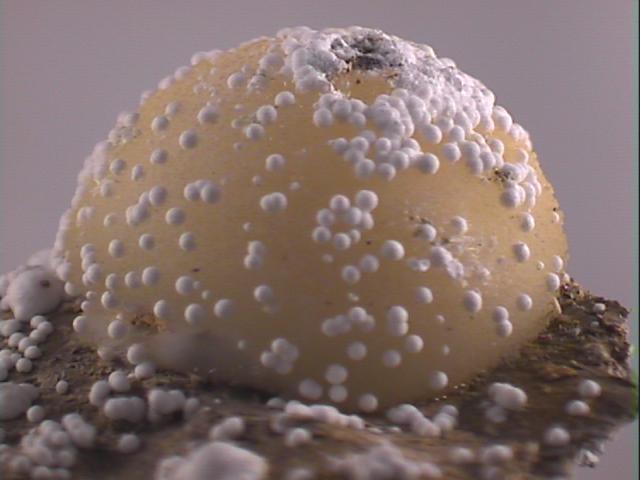 THE MINERAL BRUCITE
THE MINERAL BRUCITE
- Chemical Formula: Mg(OH)2, Magnesium Hydroxide
- Class: Oxides and Hydroxides
- Group:
Brucite - Uses: A minor source of metallic magnesium, a source of magnesia and as a refractory additive.
Specimens
It is brucite's structure that is interesting. The basic structure forms stacked sheets of octahedrons of magnesium hydroxide. The octahedrons are composed of magnesium ions with a +2 charge bonded to six octahedrally coordinated hydroxides with a -1 charge. Each hydroxide is bonded to three magnesiums. The result is a neutral sheet since +2/6 = +1/3 (+2 charge on the magnesiums divided among six hydroxide bonds) and -1/3 = -1/3 (-1 charge on the hydroxides divided among three magnesiums); thus the charges cancel.
The lack of a charge on the brucite sheets means that there is no charge to retain ions between the sheets and act as a "glue" to keep the sheets together. The sheets are only held together by weak residual bonds and this results in a very soft easily cleaved mineral. Brucite is closely related to gibbsite, Al(OH)3. However the extra charge in gibbsite's aluminum (+3) as opposed to brucite's magnesium (+2) requires that one third of the octahedrons to be vacant of a central ion in order to maintain a neutral sheet.
Brucite is interesting for another reason because it is often found as a part of the structure of other minerals. How can this be? Well, the neutral magnesium hydroxide sheets are found sandwiched between silicate sheets in two important clay groups: the Chlorite and Montmorillonite/smectite groups. The individual magnesium hydroxide layers are identical to the individual layers of brucite and are referred to as the "brucite layers".
PHYSICAL CHARACTERISTICS:
- Color is white or colorless with shades of gray, blue and green.
- Luster is vitreous or waxy; cleavage surfaces have a pearly luster.
- Transparency Crystals are translucent and rarely transparent.
- Crystal System is trigonal; bar 3 2/m
- Crystal Habit is typically in flattened tabular crystals with rare rhombohedral terminations. Also found in lamellar and fibrous aggregates and as foliated masses. Brucite has been known to pseudomorph crystals of periclase.
- Cleavage is perfect in one direction, basal.
- Fracture is uneven.
- Hardness is 2 - 2.5
- Specific Gravity is 2.4 (slightly below average)
- Streak is white.
- Other Characteristics: cleavage flakes and fibers are flexible but not elastic.
- Associated Minerals are calcite, wollastonite, nepheline, talc, aragonite, serpentine, chromite, dolomite, magnesite, periclase and other magnesium minerals.
- Notable Occurrences include Unst, Shetland Islands, England; Aesbestos, Wakefield and Black Lake, Quebec, Canada; Aosta, Italy; Brewster, New York, Wood's Mine, Texas, Gabbs, Nevada, Crestmore, California and Berks Co., Pennsylvania, USA.
- Best Field Indicators are crystal habit, luster (especially on cleavage surfaces), lack of soapy or greasy feel and flexible but inelastic flakes and fibers.

